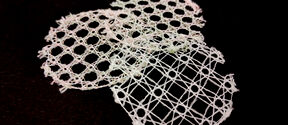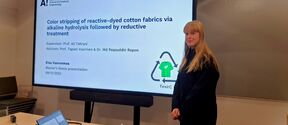Team behind the first black hole image awarded a multi-million dollar prize – Tuomas Savolainen is one of the awardees

This year, the Breakthrough Prize in Fundamental Physics, known also as the Oscars of Science, is awarded to the 347 scientists who captured an image of a supermassive black hole and its shadow for the first time in history. The award is worth three million dollars, and it will be shared equally among the scientists.
”It is fantastic that this award gives recognition to the entire Event Horizon Telescope collaboration. This accomplishment would not have been possible without co-operation between hundreds of talented and dedicated people. The award encourages us to continue working toward new breakthroughs,” says the only Finnish member of the EHT collaboration, Tuomas Savolainen, from Aalto University's Metsähovi Radio Observatory. Savolainen was involved in analysing the enormous amount of data that made capturing the photo possible.
Earth-sized telescope
The scientists of the Event Horizon Telescope, or EHT, revealed on 10 April 2019 that, for the first time ever, they had succeeded in capturing an image of the supermassive black hole at the centre of the Messier 87 galaxy. The scientific breakthrough was made possible by technology that allowed the team to synchronize radio telescopes around the world into a virtual telescope as large as the Earth, with a record-breaking resolving power.
The first photo of a black hole was merely the beginning for a new way of studying gravity in extreme environments.
”Next, we are planning to record the very first video that shows the movements of gas around a black hole. Our goal is also to add new telescopes to the network and improve the quality of the images, which would allow us to make more stringent tests of the general theory of relativity. We are also thinking about setting up telescopes in space,” says Tuomas Savolainen.
”In addition, we want to understand how the black holes shoot out their impressive plasma jets, in which matter is streaming from the galaxy almost at the speed of light. In the future, we will be able, for example, to study the structure of the magnetic field of a plasma jet in more detail,” Savolainen continues.
The prize is awarded by the Breakthrough Prize Foundation, founded by the Russian physicist and entrepreneur Yuri Milner. The Board of the foundation includes, among others, Mark Zuckerberg.
Further information:
Tuomas Savolainen
Docent, Senior Scientist
Member of the EHT collaboration
Aalto University
Department of Electronics and Nanoengineering, Metsähovi Radio Observatory
Tel: +358 (0)50 308 3696
tuomas.k.savolainen@aalto.fi

Read more news

Smart textiles are reshaping our understanding of materials – and interspecies communication
The PAST-A-BOT research project, funded by the European Research Council (ERC), is developing soft, intelligent textiles that could one day function as rescue robots, sound-sensing agricultural fabrics, or assistive clothing. At the same time, the project aims to rethink the way we approach materials research.
Master’s student showcases efficient color stripping of cotton fabrics
On December 9, master’s thesis student Elsa Vuorenmaa from the Textile Chemistry Group presented the results of her research on color stripping of reactive-dyed cotton fabrics.
Future makers research batteries, cryptography and plastic recycling
The Technology Industries of Finland Centennial Foundation awarded 3.5 million euros in research funding to eight projects, five from Aalto University.






